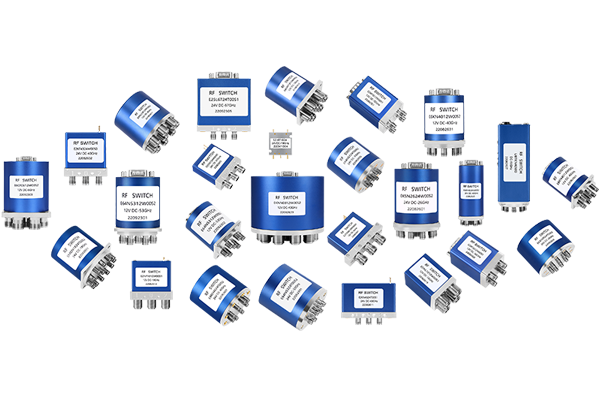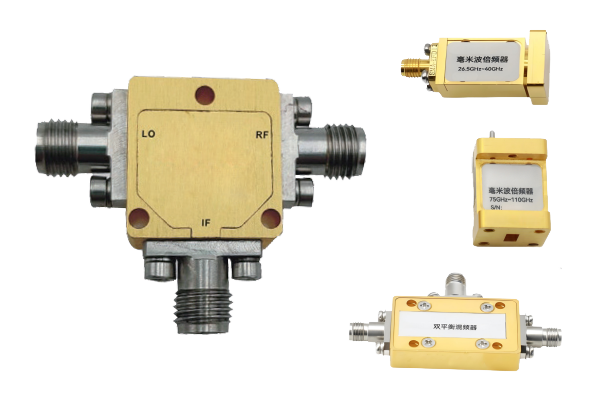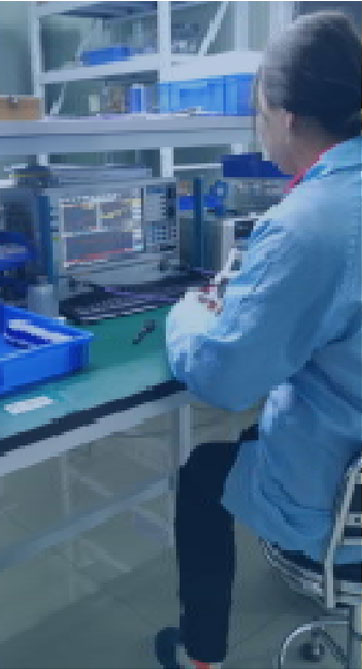
Pin diodes are widely recognized as vital components in RF systems because of their intrinsic functional attributes Their prompt switching characteristics combined with low capacitance and small insertion loss enable efficient use in switching modulation and attenuation scenarios. The fundamental operating principle of PIN diode switching rests on adjusting current flow with a control bias. A change in bias voltage transforms the depletion-region width of the p–n junction, affecting conductance. By varying the bias level PIN diodes can be reliably switched to operate at high frequencies with low distortion
PIN diodes find placement inside complex circuit frameworks when precise timing and control is required They are suited to RF filtering arrangements for selective band pass and band stop operations. Their capability to tolerate high-power signals allows deployment in amplifiers power dividers and generator equipment. The development of compact efficient PIN diodes has increased their deployment in wireless communication and radar systems
Coaxial Switch Design and Performance Analysis
Engineering coaxial switches requires meticulous handling of diverse design variables The operation of a coaxial switch is affected by the selected switch topology frequency band and insertion loss behavior. Superior coaxial switch design seeks minimal insertion loss alongside strong isolation between ports
Performance assessment centers on return loss insertion loss and port isolation metrics. These metrics are commonly measured using simulations theoretical models and experimental setups. Precise performance analysis is essential for guaranteeing dependable coaxial switch function in applications
- Engineers use simulation software analytical calculations and experimental methods to evaluate coaxial switches
- Temperature, mismatched impedances and manufacturing variances often have strong effects on switch performance
- Novel developments and recent trends in coaxial switch design pursue performance gains alongside miniaturization and power savings
Optimizing Low Noise Amplifier Architectures
Maximizing LNA performance efficiency and gain is necessary to secure exceptional signal quality in applications This calls for deliberate active device selection bias strategies and topological design choices. A robust LNA layout minimizes noise inputs while maximizing amplification with low distortion. Modeling and simulation tools enable assessment of how transistor choices and biasing alter noise performance. Lowering the Noise Figure is the aim, indicating enhanced preservation of input signal over generated noise
- Prioritizing low-noise transistors is crucial for optimal LNA performance
- Correctly applied bias conditions that are optimal and suitable are vital for low noise
- The configuration and topology substantially shape the amplifier’s noise response
Techniques of matching networks noise cancellation and feedback control contribute to improved LNA operation
Pin Diode Switch Based Signal Routing

Pin diode based switches enable adaptable and effective RF signal routing in various use cases These devices switch rapidly enabling active dynamic routing of RF paths. The low insertion loss and high isolation of PIN diodes help maintain signal integrity during switching. Common uses encompass antenna selection duplexers and phased array implementations
Operation relies on changing the device resistance via applied control voltage to switch paths. In the off deactivated or open state the diode presents a high resistance path blocking signal flow. The application of a positive bias reduces device resistance and permits RF passage
- Additionally PIN diode switches yield high switching speed low power draw and compact footprint
PIN diode switch networks can be configured in multiple architectures and designs to support complex routing tasks. By interconnecting multiple switches designers can build dynamic switching matrices for flexible path configuration
Evaluation of Coaxial Microwave Switch Performance

Evaluation and testing of coaxial microwave switches is vital for verifying correct operation in electronic networks. Many factors such as insertion reflection transmission loss isolation switching speed and spectrum range govern switch performance. Thorough evaluation entails measurement of these parameters under diverse operational environmental and testing circumstances
- Additionally the assessment should examine reliability robustness durability and the ability to endure severe environmental conditions
- Ultimately findings from a thorough evaluation yield critical valuable essential insights and data for selecting designing and optimizing switches for targeted uses
Minimizing Noise in LNA Circuits A Comprehensive Review
Low noise amplifier circuits are essential components in many wireless radio frequency and RF communication systems because they amplify weak signals while limiting added noise. This review gives a broad examination analysis and overview of methods to lower noise in LNAs. We examine explore and discuss primary noise origins such as thermal shot and flicker noise. We also review noise matching feedback implementations and biasing tactics aimed at reducing noise. It highlights recent progress including advanced semiconductor materials and novel circuit topologies that cut noise figure. Offering a thorough understanding of noise mitigation principles and methods the review helps designers and engineers build high performance RF systems
High Speed Switching Roles of PIN Diodes

They show unique remarkable and exceptional characteristics tailored for high speed switching uses Their low capacitance and resistance aid rapid switching speeds to meet demands requiring precise timing control. In addition PIN diodes display linear voltage response that supports precise amplitude modulation and switching performance. Their versatility adaptability and flexibility position them as suitable applicable and appropriate for a wide array of high speed use cases Common applications encompass optical communications microwave circuits and signal processing hardware and devices
IC Coaxial Switch and Circuit Switching Advances
Coaxial switch integrated circuits deliver improved signal routing processing and handling within electronic systems circuits and devices. Such integrated circuits are built to control manage and direct signal flow over coaxial lines while delivering high frequency performance and low propagation or insertion latency. IC miniaturization enables compact efficient reliable and robust designs ideal for dense interfacing integration and connectivity needs
- By meticulously carefully and rigorously applying these methods developers can produce LNAs with superior noise performance enabling sensitive reliable electronics Through careful meticulous and rigorous implementation of these approaches engineers can achieve LNAs with exceptional noise performance supporting sensitive reliable systems By carefully meticulously and rigorously applying these pin diode switch approaches designers can realize LNAs with outstanding noise performance enabling sensitive reliable electronic systems Through careful meticulous and rigorous application of such methods engineers can design LNAs with top tier noise performance enabling dependable sensitive systems
- Applications range across telecommunications data communications and wireless networking
- Integrated coaxial switch solutions apply to aerospace defense and industrial automation sectors
- These technologies appear in consumer electronics A V gear and test and measurement setups
Design Tips for Low Noise Amplifiers in mmWave Bands

Designing LNAs for mmWave bands is challenging because of increased signal loss and pronounced noise contributions. Parasitic capacitance and inductance play a dominant role at mmWave and necessitate precise layout and component choices. Minimizing input mismatch and maximizing power gain are critical essential and important for LNA operation in mmWave systems. Selecting the right active devices including HEMTs GaAs MESFETs and InP HBTs helps secure low noise figures at mmWave. Furthermore the design and optimization of matching networks is crucial to securing efficient power transfer and impedance match. Accounting for package parasitics is important since they can significantly affect LNA performance at mmWave. The use of low-loss lines and careful ground plane planning is essential necessary and important to limit reflections and sustain bandwidth
PIN Diode Behavior Modeling for RF Switching
PIN diodes are critical components elements and parts in many RF switching applications systems and contexts. Exact detailed and accurate characterization of these devices is essential for the design development and optimization of reliable high performance circuits. This requires analyzing evaluating and examining electrical properties including voltage current resistance impedance and conductance. Frequency response bandwidth tuning capabilities and switching speed latency or response time are also characterized
Additionally moreover furthermore the development of precise models simulations and representations for PIN diodes is critical essential and vital for predicting behavior in complex RF contexts. Different modeling methods like lumped element distributed element and SPICE models exist. Model selection is guided by specific application requirements and the desired required expected accuracy
Sophisticated Techniques to Achieve Minimal LNA Noise
LNA design is a critical undertaking that demands precise attention to topology and parts selection to achieve low noise. Recent emerging and novel semiconductor advances have opened the door to innovative groundbreaking sophisticated design techniques that cut noise significantly.
Some of the techniques include using implementing and employing wideband matching networks selecting low noise transistors with high intrinsic gain and optimizing biasing schemes strategies or approaches. Additionally advanced packaging and thermal management practices are critical for minimizing external noise influences. By rigorously meticulously and carefully implementing these techniques practitioners can achieve LNAs with remarkable noise performance for sensitive reliable electronics
